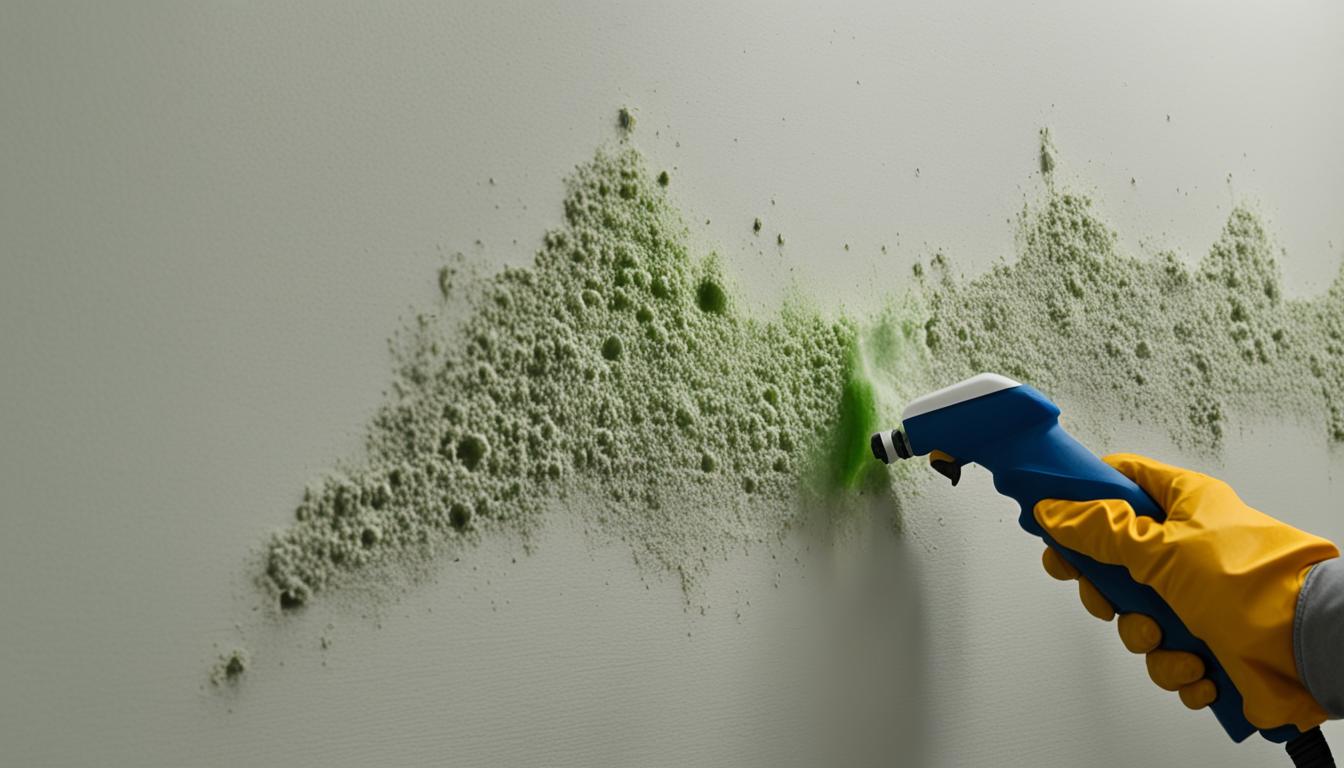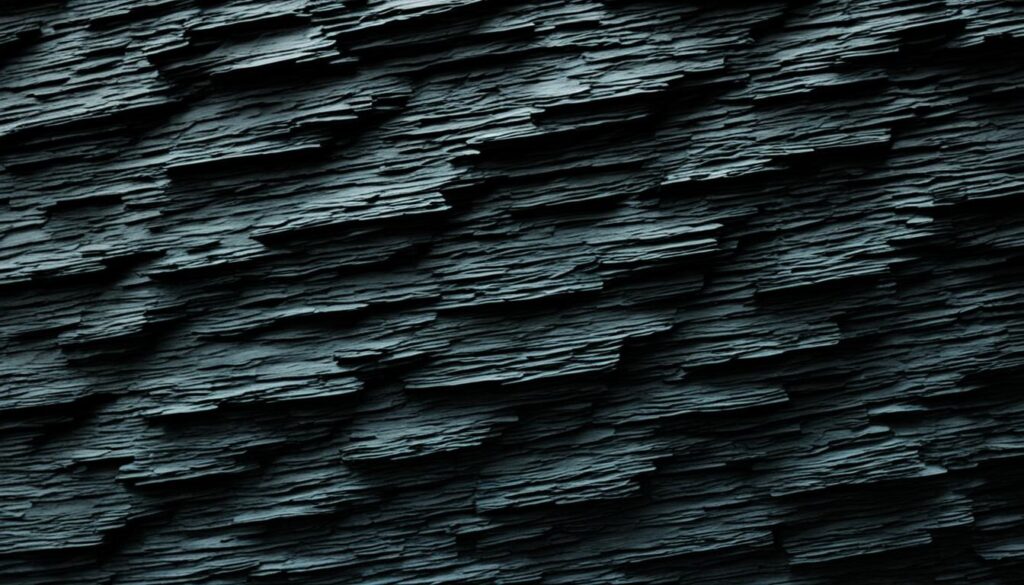
Remedying Mold Behind Drywall: Effective Solutions
Mold growth behind drywall can be a persistent problem, impacting the air quality in your home and potentially causing health issues. Knowing how to fix mold behind drywall is crucial to maintain a safe living environment. In this section, we will guide you through step-by-step instructions on remediation methods and offer valuable tips for DIY mold removal.
Key Takeaways
- Identifying signs of mold in walls is essential before attempting any remediation.
- Black mold behind walls is often a significant indicator of a mold problem.
- DIY mold removal from drywall can be effective for small-scale issues.
- Use appropriate cleaning solutions and protective gear when removing mold yourself.
- Prevent future mold growth by implementing preventive measures in your home.
Identifying Mold in Walls: Signs and Symptoms
Before tackling mold behind drywall, it’s essential to identify its presence. Recognizing the signs and symptoms of mold in walls, including black mold, is crucial for early detection and prompt action. By understanding these indicators, you can take necessary steps to prevent further damage and protect your health.
Visible signs and discoloration: Mold growth often appears as black, green, or brown patches on the walls. Pay close attention to any areas that exhibit discoloration or show signs of deteriorating materials.
Musty odor: Mold emits a distinct musty smell. If you notice an unpleasant, earthy odor in a specific area of your home, it could be an indication of hidden mold behind the walls.
Allergy symptoms: Mold spores can trigger allergic reactions in some individuals. If you or your family members experience unexplained respiratory issues, nasal congestion, coughing, or skin irritation, it may be a result of mold growth within your walls.
Water damage history: Areas that have experienced water leaks, flooding, or excessive moisture are highly susceptible to mold growth. If you’ve encountered such issues in the past, closely monitor those areas for any signs of mold.
Condensation and humidity: Mold thrives in environments with high humidity levels. If you notice excessive condensation on windows or walls, it could indicate elevated moisture levels and potential mold growth.
It’s important to note that mold may not always be visible, and its presence behind walls can go unnoticed for extended periods. If you suspect mold but cannot visually confirm it, consider consulting a professional mold inspector or remediation specialist.
Quote:
Identifying mold in walls is the first step towards ensuring a safe and healthy living environment. By staying vigilant and recognizing the signs and symptoms, you can take proactive measures to eliminate mold and prevent its recurrence.

| Signs and Symptoms | Description |
|---|---|
| Visible signs and discoloration | Black, green, or brown patches on walls |
| Musty odor | Distinct earthy smell |
| Allergy symptoms | Respiratory issues, nasal congestion, coughing, and skin irritation |
| Water damage history | Previous leaks, flooding, or excessive moisture |
| Condensation and humidity | Excessive condensation on windows or walls |
DIY Mold Removal and Prevention Tips
If you’ve discovered mold behind your drywall, it’s crucial to take immediate action. In this section, we will provide you with practical tips for removing mold from drywall on your own. We will also share preventative measures to stop mold growth and ensure a healthier living environment.
Safe and Effective Techniques for Removing Mold from Drywall
When tackling mold removal from drywall, it’s important to prioritize safety. Follow these steps to effectively remove mold:
- Put on protective gear, including gloves, goggles, and a respirator mask, to safeguard yourself from mold spores.
- Seal off the affected area with plastic sheeting to prevent the spread of mold spores to other parts of your home.
- Use a stiff brush or sponge to scrub the mold-infested area with a solution of water and detergent or a commercial mold cleaner.
- Rinse the area thoroughly with clean water and allow it to dry completely.
- If the mold growth is extensive or persistent, consider seeking professional assistance to ensure thorough remediation.
Note: If you have allergies, respiratory problems, or are dealing with a large-scale mold issue, it’s best to consult a professional mold remediation service.
Preventative Measures to Stop Mold Growth
Preventing mold growth is just as important as removing it. Here are some tips to help you keep your home mold-free:
- Keep humidity levels in your home below 50% by using dehumidifiers or air conditioners.
- Fix any leaks or water damage immediately to prevent moisture buildup, which can contribute to mold growth.
- Ensure proper ventilation in your home, especially in areas prone to moisture, such as bathrooms, kitchens, and basements.
- Regularly clean and dry surfaces that are prone to moisture, such as shower walls, sinks, and countertops.
- Regularly inspect and clean areas where mold often grows, such as window sills, seals, and grout lines.
By following these preventative measures, you can significantly reduce the risk of mold growth in your home.
Remember, mold behind drywall should never be ignored. Proactive mold removal and prevention are essential for maintaining a healthy and safe living environment for you and your family.

Conclusion
To conclude, we have explored effective solutions for fixing mold behind drywall. While DIY methods can be useful for small-scale mold issues, it is essential to seek professional mold removal services for extensive or recurring problems. Professional mold removal services offer the expertise and specialized equipment needed to ensure thorough remediation.
However, it’s important to take preventive measures to maintain a mold-free home environment. Following these mold remediation tips can help prevent future mold growth:
- Address any water leaks or moisture issues promptly to prevent mold growth.
- Maintain proper ventilation and airflow in bathrooms, kitchens, and other areas prone to moisture accumulation.
- Regularly clean and dry areas prone to dampness, such as basements and crawl spaces.
- Monitor indoor humidity levels and use dehumidifiers if necessary to keep humidity below 50%.
- Ensure proper insulation and sealing of windows, doors, and other potential points of water intrusion.
If you are in the Miami area and require professional assistance with mold removal, Fix Mold Miami is a trusted provider of comprehensive mold remediation services. Contact their expert team at 305-465-6653 for an assessment and reliable solutions to your mold concerns.




